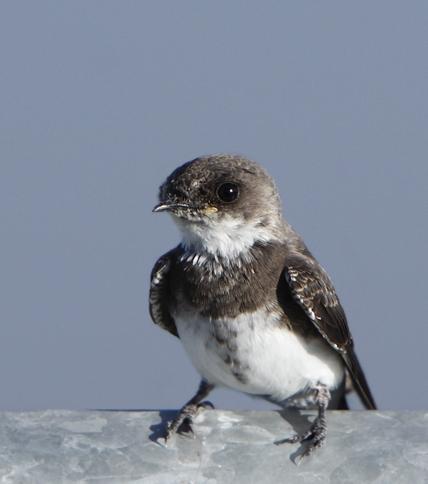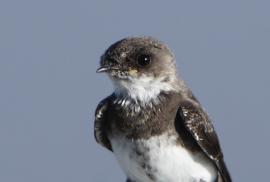Guide to Boreal Birds
Overview
Bank Swallows originally nested only in steep, sandy riverbanks, but, like other swallows, they have adapted to humans and now nest in the sides of man-made excavations. They breed in colonies of from two or three pairs to a few thousand. Most lay their eggs at the same time and thus later forage for their young at the same time. Such parents have an advantage: Swarms of flying insects are unevenly distributed and are more quickly located when many birds are searching together. The scientific name riparia is from the Latin word for "riverbank."
Description
4 3/4-5 1/2" (12-14 cm). Sparrow-sized; our smallest swallow. Brown above, dull white below; breast crossed by distinct brown band; tail notched. Northern Rough-winged Swallow is warmer brown, with dusky throat and without brown breast band.
Voice
Sharp, unmusical pret or trit-trit.
Nesting
4-6 white eggs in a grass and feather nest in a chamber at the end of a deep tunnel, which it digs near the top of a steep bank. Since it breeds in large colonies, nesting banks may sometimes appear riddled with holes.
Habitat
Banks of rivers, creeks, and lakes; seashores.
Range/Migration
Breeds from Alaska across northern Canada south to California, Texas, and Virginia. Winters in tropics. Also in Old World.



